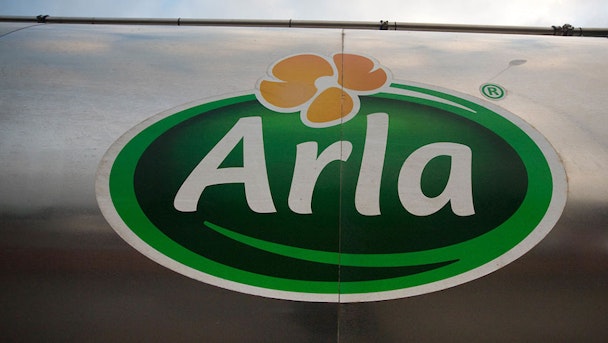Arla in-houses creative and media but promises there's still room for agencies
Arla is the latest advertiser to bring media and creative capabilities in-house. But, somewhat paradoxically, in the same week as the plan was revealed the brand inked a contract with Accenture Interactive and Karmarama to make it its lead global digital agency. Here’s how it will work.

Arla opens in-house agency, The Barn
The internal outfit, dubbed ‘The Barn’ was first established late last year and is based close to Arla's head office in the Danish town of Sønderhøj. It is currently staffed with 18 people covering three departments; media, creative development and technology.
Half of the crew have come from existing data and marketing roles in Arla but the other half have been poached not just from ad land, but other brands that have successfully built similar in-house operations, such as Lego.
It’s being led by Thomas Heilskov, global head of digital marketing and innovation and his plan for the unit is ambitious. Over the next 12 months he wants it to expand into the UK (it’s in the process of signing off a space in Leeds) and Dubai.
“It's no surprise that as media behaviours are changing, brands are under more pressure to act quickly, be present and optimise more in-flight. That's rapidly transformed the whole marketing process so we needed a more agile model where media and content comes together,” said Heilskov of the motivations.
“We need to tailor the messages more when it comes to personalisation, have additional variations of creative and be able to react to news events - those tasks are expensive with agencies and it's tough to have the media and creative team come together to do it fast enough.
“And then there are financial reasons - there are efficiencies to be gained out of it but that number is not something I want to detail.”
'We're not moving away from agencies'
What this means for agencies is evolving. For the time being The Barn will only service Arla's biggest brands: Lurpak, Castello, Anchor, and a handful of others that run under the brand name.
Globally, Wieden + Kennedy currently handles the Lurpak ad account, Mother and Leo Burnett manage creative and digital respectively for Castello, while WCRS is on the Anchor creative.
Carat handles media for the entire group of brands while, just this week, Arla appointed Accenture Interactive and Karmarama as its lead global digital agency.
“We’re not completely moving away from agencies,” stressed Heilskov.
On the media front, it has begun to flex its buying muscles by managing all social media internally. It has “centralised” its programmatic buying into a hub within Carat Amsterdam though the goal for the end of 2019 is to also have moved all of that in-house.
“As we bring more in-house Carat will take on more of a strategic role and be more focused on the planning and strategy. They will still be a partner,” he claimed.
It declined to reveal, or break down, its media spend or how much it invests in creative or production agencies.
On the creative front it’s following in P&G and Unilever’s footsteps by internalising the bulk of its production and content marketing.
Though it would seem the ambition is to manage as much as it can without spending on agencies (the ultimate goal, says Heilskov, is that the less it spends on advertising the more it can give back to dairy farmers) the marketer claims that by and large its roster of ad shops have been positive about the move as they are being given bigger budgets to work on the “high level” creative.
“The response we've had from the agencies is that there's a better set up for them to work with the data to optimise the creative,” he explained.
“Some of the things we couldn't afford before we can now do. We're basically getting more unified. The agencies will do more high level creative and we'll do the optimisation. It's about being clearer on the roles of what each does and in this process the agencies have been pretty positive.”
It’s early days but through a few test campaigns Arla claims to have seen a reduction in the “cost-per-engagement” metric it’s measuring this initiative's success against.
“This is a change for us and we’re slowly stepping up. It's why we're not taking on all brands from day one. We need to learn as we go and walk before we sprint. We'll slowly bring them in one by one. That's the biggest take-out, that we don't go too fast and are adapting the model to make sure we're assisting agencies and have the right capabilities.”
Arla is among an increasing number of brands to have set up an in-house advertising team. P&G has been ruthless in its cull of global advertising agencies as it experiements with a new in-house model while FMCG rival Unilever has sought to cut ad spend by pumping more work through its internal shop U-Studio.
A study by the Association of National Advertisers (ANA) found that 78% of its members have some sort of in-house advertising set-up, a rise from 58% in 2013 and from 42% in 2008.
Though Arla's Heilskov is optimistic on the role they play in its offering, the speed of change across the industry is hurting agencies.
"The work being done by in-house agencies is no longer confined to ‘low-hanging fruit’ such as collateral/promotional materials and internal videos," said ANA chief ANA chief Bob Liodice of the shift. “Traditional agencies are becoming increasingly challenged as marketers move more work in-house."

